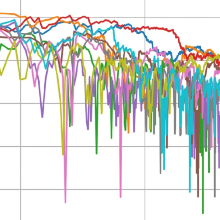New SFB 1313 Publication, published in Computational Geosciences. The work has been developed within the SFB 1313 research projects B04 and D03.
Authors
- Rebecca Kohlhaas
- Ilja Kröker (University of Stuttgart)
- Sergey Oladyshkin (University of Stuttgart, SFB 1313 research project D03)
- Wolfgang Nowak (University Stuttgart, SFB 1313 research project B04 and B05)
Abstract
Surrogate models are widely used to improve the computational efficiency in various geophysical simulation problems by reducing the number of model runs. Conventional one-layer surrogate representations are based on global (e.g. polynomial chaos expansion, PCE) or on local kernels (e.g., Gaussian process emulator, GPE). Global representations omit some details, while local kernels require more model runs. The existing multi-resolution PCE is a promising hybrid: it is a global representation with local refinement. However, it can not (yet) estimate the uncertainty of the resulting surrogate, which techniques like the GPE can do. We propose to join multi-resolution PCE and GPE s into a joint surrogate framework to get the best out of both worlds. By doing so, we correct the surrogate bias and assess the remaining uncertainty of the surrogate itself. The resulting multi-resolution emulator offers a pathway for several active learning strategies to improve the surrogate at acceptable computational costs, compared to the existing PCE-kriging approach it adds the multi-resolution aspect. We analyze the performance of a multi-resolution emulator and a plain GPE using didactic test cases and a CO 2 benchmark, that is representative of many alike problems in the geosciences. Both approaches show similar improvements during the active learning, but our multi-resolution emulator leads to much more stable results than the GPE. Overall, our suggested emulator can be seen as a generalization of multi-resolution PCE and GPE concepts that offers the possibility for active learning.

Sergey Oladyshkin
apl. Prof. Dr.-Ing.Principal Investigator, Research Project D03

Wolfgang Nowak
Prof. Dr.-Ing.Principal Investigator, Research Projects B04 and B05


